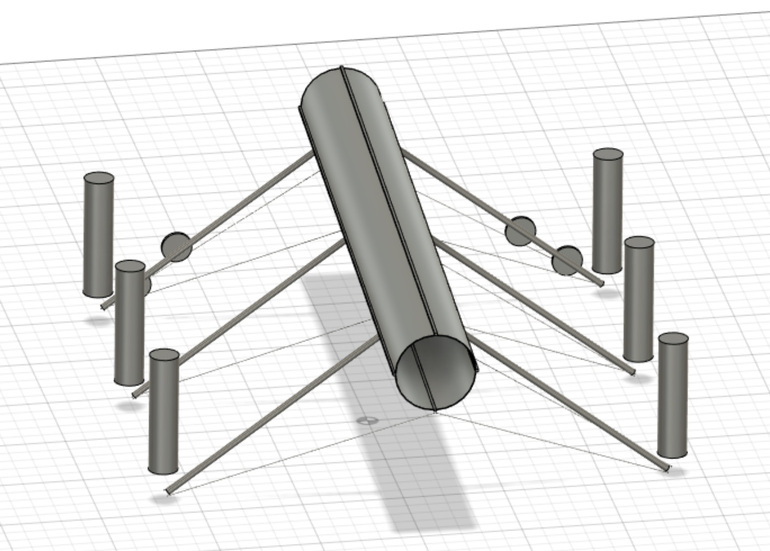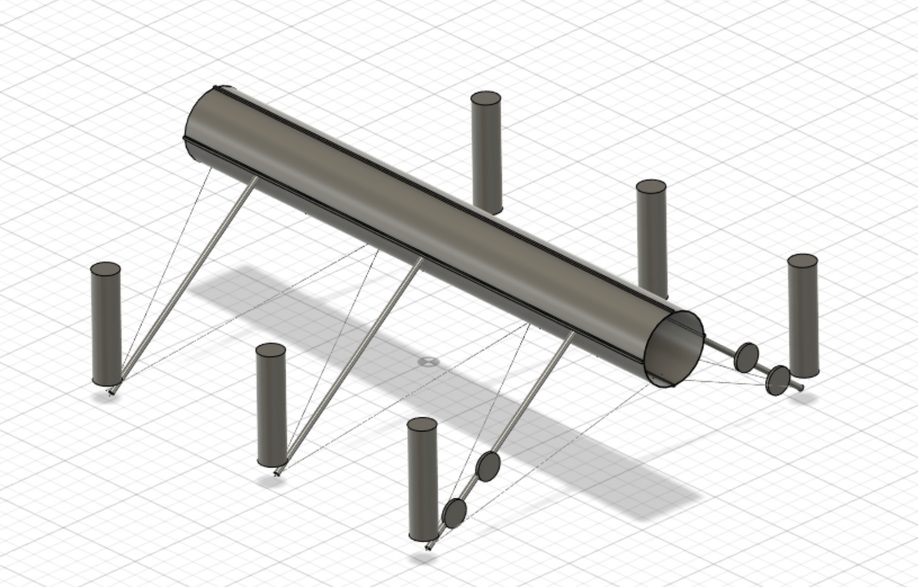
By using solar power and small reliable electric motors, seastead residents will not need the high level of skill required by normal yacht owners using sail power or high maintance diesel engines. The slow, gentle motion of a seastead is easy for beginners and older individuals to handle.
Compared to a traditional yacht, seasteads have a small waterline area and a wide stance. This means that waves passing by make less change in the buoyancy force and less tilting of the structure. A seastead 100 feet wide might tip a couple feet as a wave passes, so the angle of tipping would be far less than on typical family yacht. The stability of a Seastead in the Caribbean should be good enough to stay focused on working on a computer.
The pictures below give an idea of the current plan. The main body is made from an aluminum culvert. There are 6 legs. The 6 small vertical cylinders are the big bumpers as floats. The 4 circles are where the big propellers from the thrusters/submersible-mixers would be.


We want to get to a "minimum viable product" and then iterate on that as rapidly as we can. We are not expecting to sell the first few prototypes.